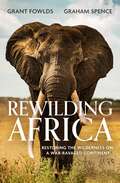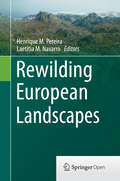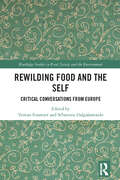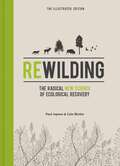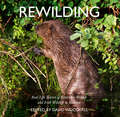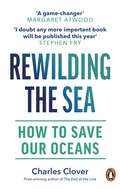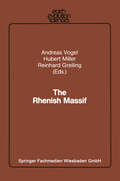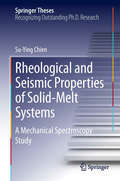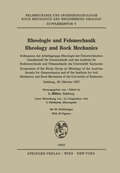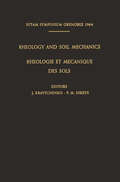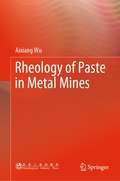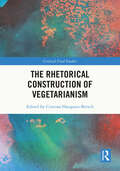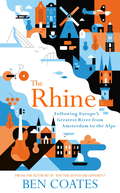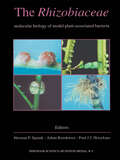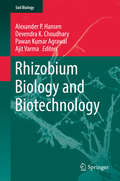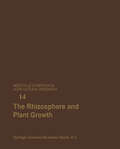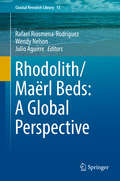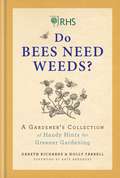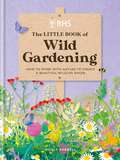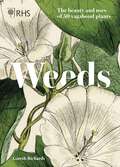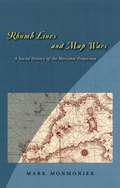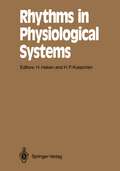- Table View
- List View
Rewilding Africa: Restoring the Wilderness on a War-ravaged Continent
by Grant Fowlds Graham SpenceConservationist Grant Fowlds lives to save and protect Africa's rhinos, elephants and other iconic wildlife, to preserve their habitats, to increase their range and bring back the animals where they have been decimated by decades of war, as in Angola, Mozambique and the Democratic Republic of the Congo. This vivid account of his work tells of a fellow conservationist tragically killed by the elephants he was seeking to save and a face-off with poachers, impoverished rural people exploited by rapacious local businessmen. Fowlds describes the impact of the Covid pandemic on conservation efforts, the vital wildlife tourism that sustains these and rural communities; and tells of conservationists' efforts to support people through the crisis. Lockdowns may have brought a welcome lull in rhino and other poaching, but also brought precious tourism to a standstill. He shows how the pandemic has highlighted the danger to the world of the illicit trade in endangered wildlife, some of it sold in 'wet markets', where pathogens incubate and spread. He describes a restoration project of apartheid-era, ex-South African soldiers seeking to make reparations in Angola, engulfed for many years in a profoundly damaging civil war, which drew in outside forces, from Cuba, Russia and South Africa, with a catastophic impact on that country's wildlife. Those who fund conservation, whether in the US, Zambia or South Africa itself, are of vital importance to efforts to conserve and rewild: some supposed angel-investors turn out to be not what they had appeared, some are thwarted in their efforts, but others are open-hearted and generous in the extreme, which makes their sudden, unexpected death an even greater tragedy. A passionate desire to conserve nature has also brought conservationists previously active in far-off Venezuela to southern Africa. Fowlds describes fraught meetings to negotiate the coexistence of wildlife and rural communities. There are vivid accounts of the skilled and dangerous work of using helicopters to keep wildebeest, carrying disease, and cattle apart, and to keep elephants from damaging communal land and eating crops such as sugar cane. He tells of a project to restore Africa's previously vast herds of elephants, particularly the famed 'tuskers', with their unusually large tusks, once prized and hunted almost to extinction. The range expansion that this entails is key to enabling Africa's iconic wildlife to survive, to preserving its wilderness and, in turn, helping humankind to survive.There is a heartening look at conservation efforts in Mozambique, a country scarred by years of war, which are starting to bear fruit, though just as a new ISIS insurgency creates havoc in the north of the country. What will humanity's relationship with nature be post-pandemic? Will we have begun to learn that by conserving iconic wildlife and their habitats we help to preserve and restore precious pockets of wilderness, which are so vital not only the survival of wildlife, but to our own survival on our one precious planet.
Rewilding European Landscapes
by Henrique M. Pereira Laetitia M. NavarroSome European lands have been progressively alleviated of human pressures, particularly traditional agriculture in remote areas. This book proposes that this land abandonment can be seen as an opportunity to restore natural ecosystems via rewilding. We define rewilding as the passive management of ecological successions having in mind the long-term goal of restoring natural ecosystem processes. The book aims at introducing the concept of rewilding to scientists, students and practitioners. The first part presents the theory of rewilding in the European context. The second part of the book directly addresses the link between rewilding, biodiversity, and habitats. The third and last part is dedicated to practical aspects of the implementation of rewilding as a land management option. We believe that this book will both set the basis for future research on rewilding and help practitioners think about how rewilding can take place in areas under their management.
Rewilding Food and the Self: Critical Conversations from Europe (Routledge Studies in Food, Society and the Environment)
by Tristan Fournier Sébastien DalgalarrondoThis volume contributes to the return to nature movement that is very much in vogue in contemporary European societies, by examining the place of food and eating in the "rewilding" process. It is divided into three parts, each of which consists of conversations between social scientists, with fieldwork collected from across Denmark, Finland, France, Italy, Norway and Switzerland. The first part focuses on the ways in which the hunter-gatherer livelihood has been transformed into a resilient, simpler and ecological way of life. It is dedicated to hunting and identifies the contexts in which large wild game meat is consumed and the reasons why such a product is still valued today. The second part shows how some practices that aim to reconnect with natural processes are developing within a market economy. Case studies on natural wine and fasting retreats help us to identify the promises that producers and promoters are relying on in order to disseminate them. Finally, the third part considers how this process of rewilding food is expressed in post-modernity. By focusing on two normative frameworks in which the rhetoric of the wild is mobilized although it is not expected to be in these terms – urbanity and the gender order – the goal is to understand the extent to which referring to the wild in food discourses and practices contributes to challenging our identities, and to creating possible forms of emancipation. This book will be of great interest to students and scholars interested in food cultures, human nature relationships, and sustainable diets.
Rewilding Food and the Self: Critical Conversations from Europe (Routledge Studies in Food, Society and the Environment)
by Tristan Fournier Sébastien DalgalarrondoThis volume contributes to the return to nature movement that is very much in vogue in contemporary European societies, by examining the place of food and eating in the "rewilding" process. It is divided into three parts, each of which consists of conversations between social scientists, with fieldwork collected from across Denmark, Finland, France, Italy, Norway and Switzerland. The first part focuses on the ways in which the hunter-gatherer livelihood has been transformed into a resilient, simpler and ecological way of life. It is dedicated to hunting and identifies the contexts in which large wild game meat is consumed and the reasons why such a product is still valued today. The second part shows how some practices that aim to reconnect with natural processes are developing within a market economy. Case studies on natural wine and fasting retreats help us to identify the promises that producers and promoters are relying on in order to disseminate them. Finally, the third part considers how this process of rewilding food is expressed in post-modernity. By focusing on two normative frameworks in which the rhetoric of the wild is mobilized although it is not expected to be in these terms – urbanity and the gender order – the goal is to understand the extent to which referring to the wild in food discourses and practices contributes to challenging our identities, and to creating possible forms of emancipation. This book will be of great interest to students and scholars interested in food cultures, human nature relationships, and sustainable diets.
Rewilding - The Illustrated Edition: The Radical New Science of Ecological Recovery (Hot Science Ser. #14)
by Mr Paul Jepson Mr Cain Blythe'A dazzling illustrated edition of a 'hugely useful and fascinating resumé of rewilding' Isabella Tree, author of Wilding'Compelling ... succinct and objective' Financial TimesRewilding reveals the ways in which ecologists are restoring the lost interactions between animals, plants, and natural disturbances that are the essence of thriving ecosystems. It looks into a past in which industrialization and globalization have downgraded our grasslands; at present projects restoring plants and animals to their natural, untamed state; and into the future, with ten predictions for a rewilded planet.This illustrated edition combines beautiful natural history images with infographic flow-charts depicting the 'trophic cascades' of biodiverse ecosystems, to explore a brave new world repopulated with wild horses and cattle, beavers, rhinos, and wolves.'A masterly job, explaining the science behind rewilding in an accessible, honest and compelling way. It deserves to be widely read and become a book of great influence.' Isabella Tree, author of Wilding.
Rewilding: Real Life Stories of Returning British and Irish Wildlife to Balance
by David WoodfallA hopeful yet practical collection of essays exploring the many opportunities and benefits of rewilding and how to get involved today. Highly illustrated with nature photography tracing landscape change over thousands of years.
Rewilding the Sea: How to Save our Oceans
by Charles Clover'A game-changer!' - Margaret Atwood, Twitter'Desperately needed' - Isabella Tree'I doubt any more important book will published this year' - Stephen Fry In this indispensable follow up to his acclaimed The End of the Line: How Overfishing is Changing the World, Charles Clover chronicles how determined individuals are proving that the crisis in our oceans can be reversed, with benefits for both local communities and entire ecosystems. Rewilding the Sea celebrates what happens when we step aside and let nature repair the damage: whether it is the overfishing of bluefin tuna across the Atlantic, the destruction of coral gardens by dredgers in Lyme Bay or the restoration of oysters on the East Coast of America. The latest scientific research shows that trawling and dredging create more CO2 than the aviation industry and damage vast areas of our continental shelves, stopping them soaking up carbon. We need to fish in different ways, where we fish at all. We can store carbon and have more fish by stepping aside more often and trusting nature.Essential and revelatory, Rewilding the Sea propels us to rethink our relationship with nature and reveals that saving our oceans is easier than we think.
The Rhenish Massif: Structure, Evolution, Mineral Deposits and Present Geodynamics (Earth Evolution Sciences)
by Andreas Vogel Hubert Miller Reinhard GreilingRheological and Seismic Properties of Solid-Melt Systems: A Mechanical Spectroscopy Study (Springer Theses)
by Su-Ying ChienOur understanding of the rheological and seismic properties of the Earth’s interior relies on interpreting geophysical observations using mineral physics data. The complexity of natural materials complicates these interpretations, but here the key features of such materials in controlling the attenuation of seismic waves are determined by a set of careful experiments. This thesis clearly explains how dynamic mechanical spectroscopy has been used to determine the visco-elastic properties of igneous and sedimentary rocks containing geological fluids. These experiments highlight, for the first time, the importance of mineral and rock microstructures as controls on geophysical properties of solids, particularly near the melting point. The results have impacts in areas ranging from volcanic processes, through the structure of the deep Earth, to fluid-saturated porous media.
Rheologie und Felsmechanik / Rheology and Rock Mechanics: Kolloquium der Arbeitsgruppe Rheologie der Österreichischen Gesellschaft für Geomechanik und des Instituts für Bodenmechanik und Felsmechanik der Universität Karlsruhe / Symposium of the Study Group on Rheology of the Austrian Society for Geomechanics and of the Institute for Soil Mechanics and Rock Machanics of the University of Karlsruhe (Felsmechanik und Ingenieurgeologie Rock Mechanics and Engineering Geology. Supplementa #5)
by C. FairhurstRheology and Soil Mechanics / Rhéologie et Mécanique des Sols: Symposium Grenoble, April 1–8, 1964 / Symposium Grenoble, 1Er–8 Avril 1964 (IUTAM Symposia)
by J. Kravtchenko P. M. SirieysFor a long period Soil Mechanics has remained at the semi-empirica stage, and only a few decades ago it has shown a tendency to become a fundamental science. However, this evolution is taking place slowly; in spite of the efforts of numerous research scientists, the very complex rheological laws of soils are still not well known. Even if these laws were elucidated, it would take a long time still to deduce simple rules from them for reliable and convenient use in current practical engineer ing. In the pursuit of these distant aims - and of others more imme diate - fundamental research and applied research are very active, both in Rheology and Soil Mechanics. The complexity of the problems to be solved should incite the laboratory researchers and the engineers to a continuous collaboration. Everyone acknowledges the advantage of these connections although aware of the difficulty of realizing this wish. However, contacts are being made little by little between the repre sentatives of the different branches of Rheology and Soil Mechanics, to the great benefit of science. The bureau of the International Union of Theoretical and Applied Mechanics (IUTAM), aware of the importance of these two associat ed fields of mechanics, considered it possible to accelerate the natural and necessary processus of their interpenetration by organizing in Grenoble, from 1st to 8th April 1964 an International Symposium on Rheology and Soil Mechanics.
Rheology of Paste in Metal Mines
by Aixiang WuThis book investigates the rheology of paste in metal mines, which is beneficial for cemented paste backfill (CPB) technology. This book establishes a theory frame of paste rheology, including measurement of the rheological properties of paste, rheological behavior of full tailings in deep thickening, rheological behavior of paste in the mixing process, rheological behavior of paste in pipeline transportation, and rheological behavior of filling body. It aims to promote the development of paste theory, the innovation of CPB technology, and the research and development of CPB equipment to accelerate the construction of green mines based on CPB. This book is intended for researchers, designers, and engineering technicians. This book can also be a textbook for postgraduate students on mining engineering and other related subjects.
The Rhetorical Construction of Vegetarianism (Critical Food Studies)
by Cristina Hanganu-BreschThis book explores themes in the rhetoric of vegetarian discourse. A vegan practice may help mitigate crises such as climate change, global health challenges, and sharpening socioeconomic disparities, by ensuring both fairness in the treatment of animals and food justice for marginalized populations. How the message is spread is crucial for these aims. Vegan practices thus uncover tensions between individual dietary choices and social justice activism, between ego and eco, between human and animal, between capitalism and environmentalism, and within the larger universe of theoretical and practical ethics. The chapters apply rhetorical methodologies to understand vegan/vegetarian discourse, emphasizing, for example, vegan/vegetarian rhetoric through the lens of polyphony, the role of intersectional rhetoric in becoming vegan, as well as ecofeminist, semiotic, and discourse theory approaches to veganism. The book aims to show that a rhetorical understanding of vegetarian and vegan discourse is crucial for the goals of movements promoting veganism. The book is intended for a wide interdisciplinary audience of scholars, researchers, and individuals interested in veganism, food and media studies, rhetorical studies, human-animal studies, cultural studies and related disciplines. It urges readers to examine vegan discourses seriously, not just as a matter of personal choice or taste but as one vital for intersectional justice and our planetary survival.
The Rhetorical Construction of Vegetarianism (Critical Food Studies)
by Cristina Hanganu-BreschThis book explores themes in the rhetoric of vegetarian discourse. A vegan practice may help mitigate crises such as climate change, global health challenges, and sharpening socioeconomic disparities, by ensuring both fairness in the treatment of animals and food justice for marginalized populations. How the message is spread is crucial for these aims. Vegan practices thus uncover tensions between individual dietary choices and social justice activism, between ego and eco, between human and animal, between capitalism and environmentalism, and within the larger universe of theoretical and practical ethics. The chapters apply rhetorical methodologies to understand vegan/vegetarian discourse, emphasizing, for example, vegan/vegetarian rhetoric through the lens of polyphony, the role of intersectional rhetoric in becoming vegan, as well as ecofeminist, semiotic, and discourse theory approaches to veganism. The book aims to show that a rhetorical understanding of vegetarian and vegan discourse is crucial for the goals of movements promoting veganism. The book is intended for a wide interdisciplinary audience of scholars, researchers, and individuals interested in veganism, food and media studies, rhetorical studies, human-animal studies, cultural studies and related disciplines. It urges readers to examine vegan discourses seriously, not just as a matter of personal choice or taste but as one vital for intersectional justice and our planetary survival.
The Rhine: Following Europe’s Greatest River from Amsterdam to the Alps
by Ben CoatesThe Rhine is one of the world's greatest rivers. Once forming the outer frontier of the Roman Empire, it flows 800 miles from the social democratic playground of the Netherlands, through the industrial and political powerhouses of Germany and France, to the wealthy mountain fortresses of Switzerland and Liechtenstein. For five years, Ben Coates lived alongside a major channel of the river in Rotterdam, crossing it daily, swimming and sailing in its tributaries. In The Rhine, he sets out by bicycle from the Netherlands where it enters the North Sea, following it through Germany, France and Liechtenstein, to its source in the icy Alps. He explores the impact that the Rhine has had on European culture and history and finds out how influences have flowed along and across the river, shaping the people who live alongside it. Blending travelogue and offbeat history, The Rhine tells the fascinating story of how a great river helped shape a continent.
The Rhizobiaceae: Molecular Biology of Model Plant-Associated Bacteria
by Herman P. Spaink Adam Kondorosi Paul J. J. HooykaasThe Rhizobiaceae, Molecular Biology of Model Plant-Associated Bacteria. This book gives a comprehensive overview on our present molecular biological knowledge about the Rhizobiaceae, which currently can be called the best-studied family of soil bacteria. For many centuries they have attracted the attention of scientists because of their capacity to associate with plants and as a consequence also to specifically modify plant development. Some of these associations are beneficial for the plant, as is the case for the Rhizobiaceae subgroups collectively called rhizobia, which are able to fix nitrogen in a symbiosis with the plant hosts. This symbiosis results in the fonnation of root or stem nodules, as illustrated on the front cover. In contrast, several Rhizobiaceae subgroups can negatively affect plant development and evoke plant diseases. Examples are Agrobacterium tumefaciens andA. rhizogenes which induce the formation of crown galls or hairy roots on the stems of their host plants, respectively (bottom panels on front cover). In addition to the obvious importance of studies on the Rhizobiaceae for agronomy, this research field has resulted in the discovery of many fundamental scientific principles of general interest, which are highlighted in this book. To mention three examples: (i) the discovery of DNA transfer of A.
Rhizobium Biology and Biotechnology (Soil Biology #50)
by Alexander P. Hansen Devendra K. Choudhary Pawan Kumar Agrawal Ajit VarmaThis book provides in-depth reviews of the role of Rhizobium in agriculture and its biotechnological applications. Individual chapters explore topics such as: the occurrence and distribution of Rhizobium; phenotypic and molecular characteristics of Rhizobium; impact of Rhizobium on other microbial communities in the rhizosphere; N2-fixation ability of Rhizobium; Rhizobium and biotic stress; Rhizobium-mediated restoration of an ecosystem; in silico analysis of the rhizobia pool; further biotechnological perspectives of Rhizobium.
The Rhizosphere and Plant Growth: Papers presented at a Symposium held May 8–11, 1989, at the Beltsville Agricultural Research Center (BARC), Beltsville, Maryland (Beltsville Symposia in Agricultural Research #14)
by Donald L. Keister Perry B. CreganPapers Presented at a Symposium held May 8--11, 1989, at the Beltsville Agricultural Research Center (BARC), Beltsville, Maryland, U.S.A.
Rhodolith/Maërl Beds: A Global Perspective (Coastal Research Library #15)
by Rafael Riosmena-Rodríguez Wendy Nelson Julio AguirreRhodolith beds are recognized internationally as a unique ecosystem, and they are the focus of this interdisciplinary book. These marine beds occur worldwide, from the tropics to the poles, ranging in depth from intertidal to deep subtidal habitats and they are also represented in extensive fossil deposits. In the light of international interest in rhodoliths and maerl concerning their role in coastal ecosystems and with respect to biodiversity, fisheries, and the production of sediment, this book provides the most comprehensive view possible. As readers will discover, rhodoliths/maerl are fundamental to a range of ecological processes, acting as ecosystem engineers including playing key roles in recruitment and providing nursery habitats. Rhodoliths/maerl have been used commercially in some parts of the world, and they are understood to be vulnerable to coastal modifications and human-induced change, and hence their status may serve as an indicator of ecosystem health. Rhodoliths/maerl contribute to global carbon budgets although the extent remains to be evaluated, as do the potential impacts of changing global climates and ocean acidification.
RHS Do Bees Need Weeds: A Gardener’s Collection of Handy Hints for Greener Gardening
by Holly Farrell Gareth RichardsRHS Do Bees Need Weeds is packed with more than 100 practical questions and answers to help you become a more eco-friendly gardener, and show you how to adopt a more sustainable way of gardening. The book includes simple, low-cost ideas, from fun projects such as how to build a wormery or a homemade water butt to advice on which plants suit bees best and how to achieve a zero-waste garden.In these pages you will find dozens of solutions to common garden problems as well as inspiring innovations that reduce your gardening consumption, tackle waste and help the environment. Filled with fascinating facts and ideas that will help you make a real difference to the green credentials of your garden, this book is both informative and entertaining, with plenty of I-never-knew-that mini-features. This is a book you and your family need, and one that you'll all enjoy, too.Includes questions such as:- Which features will make my garden greener?- Are my garden lights harmful?- How can a lawn be wildlife-friendly?- Is it ever OK to have a bonfire?- Are there alternatives to plastic?- Can I grow year-round crops?- Is it OK to buy compost?
RHS The Little Book of Wild Gardening: How to work with nature to create a beautiful wildlife haven
by Holly FarrellThe Little Book of Wild Gardening is a guide for anyone wanting to garden in a more sustainable, natural way. Working with nature benefits not just the garden, but also the gardener, wildlife and the wider environment. Divided into sections for different garden areas - including lawns, flower beds, edibles, trees and water features - The Little Book of Wild Gardening details how to embrace a natural approach to gardening for plots large and small.Introductory chapters explain how garden ecosystems can work, and how a healthy garden can mean savings in both work and resources for the gardener. There are plant profiles providing a variety of choices for a wilder approach, plus design tips and expertise in sustainable and wildlife-friendly gardening. From a sustainable veg patch to wildflower meadows, and from bat boxes to gravel gardens, the book includes projects and plants in a range of sizes and timescales so gardeners can create a bountiful and enjoyable haven that will benefit themselves, their local area, and all kinds of wildlife.
RHS Weeds: the beauty and uses of 50 vagabond plants
by Gareth Richards Royal Horticultural SocietyThe Times Top 10 Gardening Books 2021 Gardens Illustrated Books of the Year 2021 RHS Weeds gathers together 50 untamed and beautifully wild plant species, illustrated with exquisite botanical images. These subversive species no longer need to be seen as 'plants out of place'. In the modern garden, where harmony with nature and the ability to thrive under challenging conditions are key, weeds are finally getting their moment in the sun. RHS Weeds highlights the delicate charms of some of the most fascinating vagabond plants around. Beautiful botanical illustrations, including many from the Royal Horticultural Society's collections, and captivating profiles by RHS author Gareth Richards, provide key information for the modern gardener on the characteristics, usefulness and cultivation of these unsung heroes of the plant world.
Rhumb Lines and Map Wars: A Social History of the Mercator Projection
by Mark MonmonierIn Rhumb Lines and Map Wars, Mark Monmonier offers an insightful, richly illustrated account of the controversies surrounding Flemish cartographer Gerard Mercator's legacy. He takes us back to 1569, when Mercator announced a clever method of portraying the earth on a flat surface, creating the first projection to take into account the earth's roundness. As Monmonier shows, mariners benefited most from Mercator's projection, which allowed for easy navigation of the high seas with rhumb lines—clear-cut routes with a constant compass bearing—for true direction. But the projection's popularity among nineteenth-century sailors led to its overuse—often in inappropriate, non-navigational ways—for wall maps, world atlases, and geopolitical propaganda. Because it distorts the proportionate size of countries, the Mercator map was criticized for inflating Europe and North America in a promotion of colonialism. In 1974, German historian Arno Peters proffered his own map, on which countries were ostensibly drawn in true proportion to one another. In the ensuing "map wars" of the 1970s and 1980s, these dueling projections vied for public support—with varying degrees of success. Widely acclaimed for his accessible, intelligent books on maps and mapping, Monmonier here examines the uses and limitations of one of cartography's most significant innovations. With informed skepticism, he offers insightful interpretations of why well-intentioned clerics and development advocates rallied around the Peters projection, which flagrantly distorted the shape of Third World nations; why journalists covering the controversy ignored alternative world maps and other key issues; and how a few postmodern writers defended the Peters worldview with a self-serving overstatement of the power of maps. Rhumb Lines and Map Wars is vintage Monmonier: historically rich, beautifully written, and fully engaged with the issues of our time.
Rhumb Lines and Map Wars: A Social History of the Mercator Projection
by Mark MonmonierIn Rhumb Lines and Map Wars, Mark Monmonier offers an insightful, richly illustrated account of the controversies surrounding Flemish cartographer Gerard Mercator's legacy. He takes us back to 1569, when Mercator announced a clever method of portraying the earth on a flat surface, creating the first projection to take into account the earth's roundness. As Monmonier shows, mariners benefited most from Mercator's projection, which allowed for easy navigation of the high seas with rhumb lines—clear-cut routes with a constant compass bearing—for true direction. But the projection's popularity among nineteenth-century sailors led to its overuse—often in inappropriate, non-navigational ways—for wall maps, world atlases, and geopolitical propaganda. Because it distorts the proportionate size of countries, the Mercator map was criticized for inflating Europe and North America in a promotion of colonialism. In 1974, German historian Arno Peters proffered his own map, on which countries were ostensibly drawn in true proportion to one another. In the ensuing "map wars" of the 1970s and 1980s, these dueling projections vied for public support—with varying degrees of success. Widely acclaimed for his accessible, intelligent books on maps and mapping, Monmonier here examines the uses and limitations of one of cartography's most significant innovations. With informed skepticism, he offers insightful interpretations of why well-intentioned clerics and development advocates rallied around the Peters projection, which flagrantly distorted the shape of Third World nations; why journalists covering the controversy ignored alternative world maps and other key issues; and how a few postmodern writers defended the Peters worldview with a self-serving overstatement of the power of maps. Rhumb Lines and Map Wars is vintage Monmonier: historically rich, beautifully written, and fully engaged with the issues of our time.
Rhythms in Physiological Systems: Proceedings of the International Symposium at Schloß Elmau, Bavaria, October 22–25, 1990 (Springer Series in Synergetics #55)
by Hermann Haken Hans P. KoepchenRhythms are a basic phenomenon in all physiological systems. They cover an enormous range of frequencies with periods from the order of milliseconds up to some years. They are described by many disciplines and are investigated usually in the context of the physiology of the respective function or organ. The importance given to the research on rhythmicity is quite different in different systems. In some cases where the functional significance is obvious rhythms are at the center of interest, as in the case of respiration or locomotion. In other fields they are considered more or less as interesting epiphenomena or at best as indicators without essential functional significance, as in the case of cardiovascular or EEG rhythms. Recently the study of physiological rhythms has attracted growing interest in several fields, especially with respect to rhythm research in humans and its rapidly spreading applications in basic behavioral research, and as a diagnostic tool in clinical medicine. This development was favored by two methodological and conceptual ad vances: on the one hand, the availability of non-invasive methods of continu ous recording of physiological parameters and their computer-assisted evaluation, and on the other, the rapid development of theoretical analyses, for example, the understanding of dynamic systems, the generation of coordinated macroscopic pro cesses in systems comprising many single elements, and the mathematical tools for treating nonlinear oscillators and their mutual coupling.
